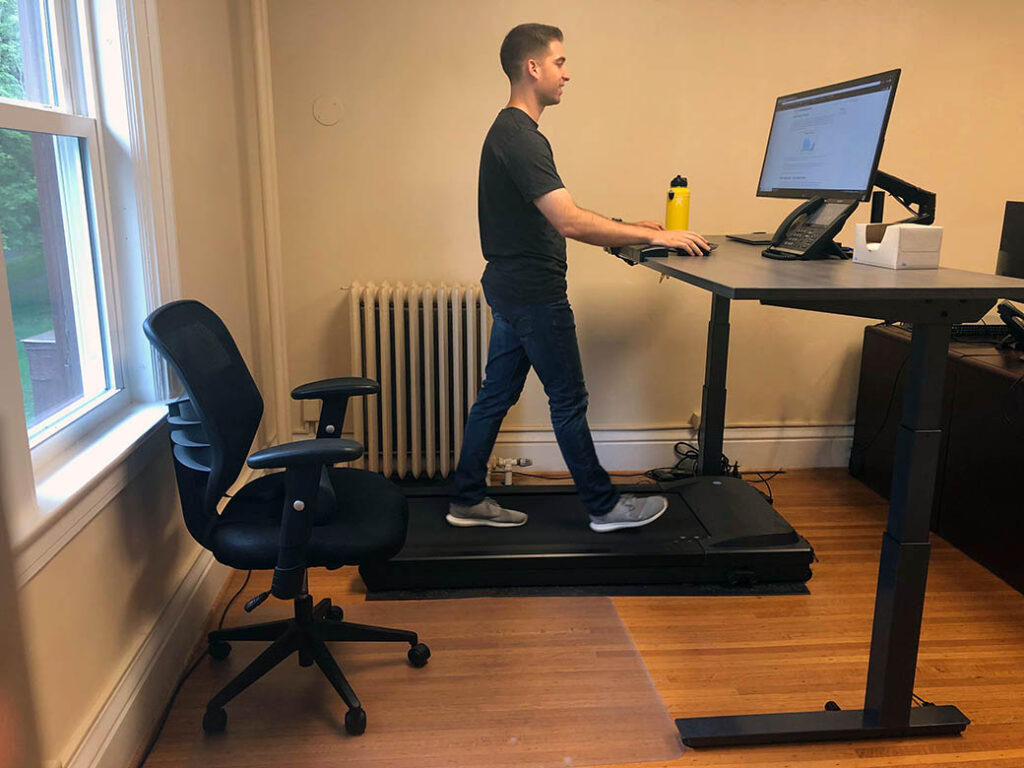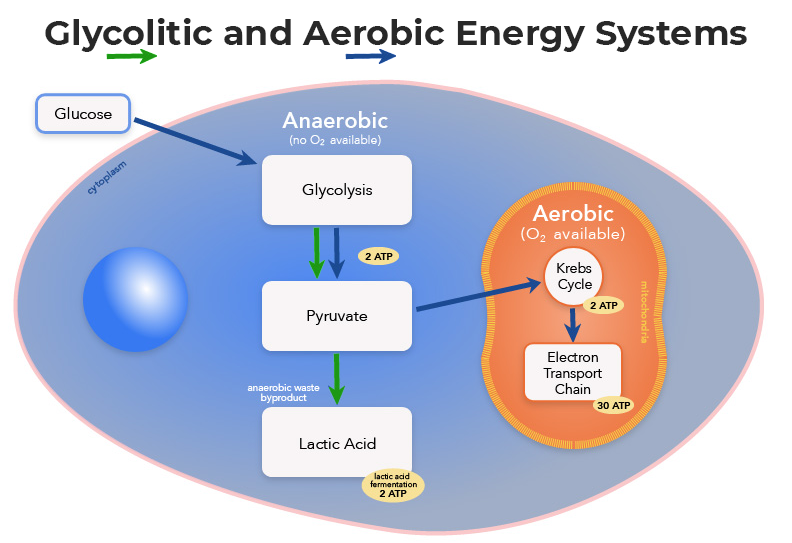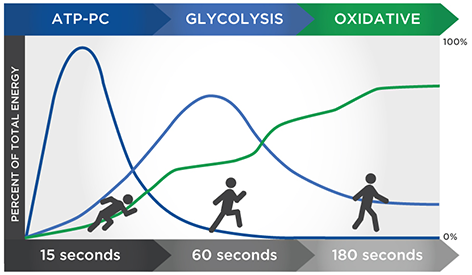I’ve improved my athletic performance and longevity biomarkers by minimizing high intensity workouts and training in zones. In December I walked into LA Fitness and saw their featured HIIT studio. Each month Men’s and Women’s Health have new articles on interval training. And Instagram is filled with trending workout challenges. But most Olympians, professional athletes, and longevity experts are focused on boring, old steady state cardio. The stationary bike and stair master have new life. But that doesn’t mean high intensity workouts should be omitted either. That’s why the VDOT training program I’m following focuses on training zones. And maybe your program should too. What are the 5 training zones? How is my training programmed? And why is each zone important for performance and longevity? Well, let’s get into it!
Training Zones
There are five training zones based upon exercise intensity. Typically, they’re measured as a percentage of your maximum heart rate. And since maximum heart rate varies greatly between people, you’ll preferably want to determine yours with a fitness test. Feel free to Google that if you’re interested. But, you can estimate your maximum heart rate by utilizing the equation: 211 – (.64 * [age]) = HRmax. Me being 30, this estimates my HRmax at 191.8 beats per minute. Now let’s get into each heart rate training zone and how my training is allocated. [1]
Zone 1: 50-60% HRmax
Zone 1 isn’t so much training as it is avoiding a sedentary lifestyle. Walking, laundry, and taking out the garbage are examples of light activities. They’ll raise your heart rate into the 50-60% HRmax range of Zone 1. And it’s where my beautiful treadmill desk fits into an active lifestyle. Typically I spend over three hours a day walking at 1.7mph while at work. It’s how I achieve over 25,000 steps/day on many occasions. And it’s also led to office guests viewing me as a zoo animal, oohing and aahing as they pass. It’s a great icebreaker.

This light activity increases blood flow throughout the brain and body. Not only is Zone 1 activity important for general health, as your fitness tracker’s move notification reminds you so often, but also for performance. Zone 1 can be viewed as the active recovery zone. This light activity enhances muscle healing and reduces muscle soreness [2]. Typically, I avoid being sedentary for more than a hour at a time. And I’ll break up those hours with at least five minutes of light activity. And the better I am with my Zone 1 activity, the better I feel both that day and the following day. If I have a hard workout and don’t get any Zone 1 work in the following day, the soreness lingers.
Zone 2: 60-70% HRmax
Zone 2 training is the stair master your grandma bought in the 70’s. It’s steady state cardio that you could perform for a couple hours if you had the time. It’s not talked about much but could be the most important training zone. This is where most athletes and longevity experts spend their time.
Since Zone 2 training is to be performed for over thirty minutes, it requires an energy system to sustain it. This energy system is the aerobic energy system. It primarily oxidizes fat for energy. The goal of Zone 2 training is to perform maximal exertion while primarily utilizing the aerobic fat oxidizing energy system. For untrained individuals, this means steady state cardio where your heart rate is maintained in the 60%’s of your maximum heart rate. For highly trained individuals, this may creep into Zone 3 nearing 80% of your max. A good measure of this training zone, is that you can hold a conversation while training but it’s slightly uncomfortable. And you could maintain this for over a hour.

When I was researching athletic training plans, I was surprised by how much athletes focus on Zone 2 training. Olympic runners not only in the 10k, but even the 5k, 1 mile, and 800 meter events using Zone 2 for much of their work. Fat provides significantly more energy than stored carbs. Therefore, becoming efficient in utilizing fat with the aerobic energy system is fundamental for performance. It allows you to sustain a higher level of output without the buildup of lactate which signals fatigue.
Efficiency with this energy system is paramount for metabolic health too. After months or years of Zone 2 training, your cells will slowly restructure. The mitochondria will move closer to the cell wall and oxidize fat more efficiently. In many cases, this is the training that’ll reduce insulin resistance and reverse symptoms of diabetes. [3]
My current training plan calls for nearly 3 hours of Zone 2 training per week. Ideally you’ll want to spread this over at least 4 days. Below, you can see all my easy (E) training both running and rowing.

Zone 3: 70-80% HRmax
I won’t cover Zone 3 as exhaustively as Zone 2. Like I mentioned, for trained individuals, a lot of the same benefits from Zone 2 apply. Trained individuals have created such efficiency with their aerobic energy system that they can sustain higher levels of effort. Their heart rates will be in this 70-80% of HRmax range. But for most, the intensity of Zone 3 will demand more immediate energy than the capabilities of the fat oxidizing system. The body will transition towards the glycolytic energy system. This systems utilizes carbohydrates in the form of glucose to generate energy instead of fat. While not as efficient at generating sustained energy, it’s efficient at meeting immediate energy needs.
Zone 4: 80-90% HRmax
Let’s jump to Zone 4 where all individuals will be primarily utilizing this glycolytic energy system. This system provides energy for short bursts of high-intensity activity. While the body has days worth of energy in fat, it only contains around 400-700 grams of stored carbohydrates [4]. These don’t last nearly as long. And the burning of glucose through this system creates lactate as a byproduct. Lactate buildup in the body is associated with fatigue [5]. But, training at this intensity will develop our glycolytic energy system. It’ll help with lactate clearance and performance at higher lactate levels. It’ll also help increase VO₂ max. Typically, my threshold runs will have me in this training zone. As seen in my training plan, I’m cycling between running a 1,000 meters or 1 mile in about four or seven minutes respectively with a minute rest. My heart rate is in this 80-90% training zone. And I’m currently doing this training around twice a week for a total of 45 minutes.

Zone 5: 90-100% HRmax
Lastly, there’s Zone 5 training. This is where your heart rate rises above 90% and gets near it’s maximum rate. Depending on your type of training, the ATP-PC energy system will be utilized more. ATP-PC stands for adenosine triphosphate-phosphocreatine. I didn’t now that but I just looked it up. This energy system provides bursts of energy for up to twenty seconds. It’s energy that’s available on tap but runs out quickly. This is where high-intensity interval training (HIIT) comes in. It can be used to develop power and speed. It’s become trendy because more calories are burned during Zone 5 training with less time exercising compared to Zone 2. So many people think you can get more benefits in less time. But as discussed, this training omits the benefits gained from creating efficiency in the aerobic energy system. That’s why it’s best to train in multiple zones for a greater breadth of benefits.

For me, this will be my interval or repeat runs. I’ll be incorporating these into my training plan as the phases advance. But I do run strides a few days a week. Strides are 100m near sprints that last around 15 seconds. I’ll do around six of these in a training session with little rest in-between.
Note:
I should note that these three energy systems are all in use at once. It’s not like one system shuts down during a different zone of training. They all work together but are utilized in different proportions based on the energy demands.

Final Thoughts
Detailing the three energy systems makes it easier to understand the importance of training in each area. This is the case for both performance and longevity. If I only walked on my treadmill desk all day, I wouldn’t see much improvement in my ability to run a 5k or maintain power and speed with age. If I only ran 100m strides, I wouldn’t recover well or increase my metabolic and cardiovascular health. And while I don’t think everyone needs to be on a performance-oriented training program like my VDOT running plan, I see many benefits of training multiple zones. It could be as simple as doing a 45-minute Zone 2 biking session with a few intervals at the end, four times a week. Something like this, while limiting sedentary periods would be great for performance and longevity too.

